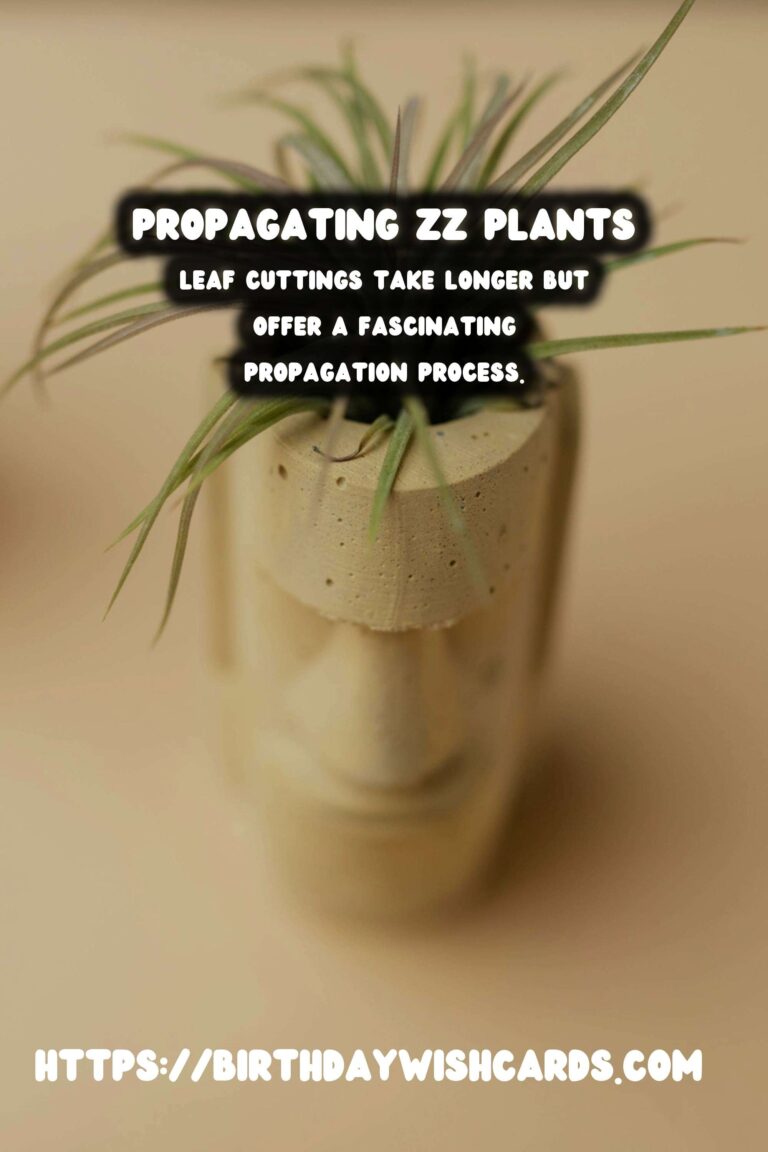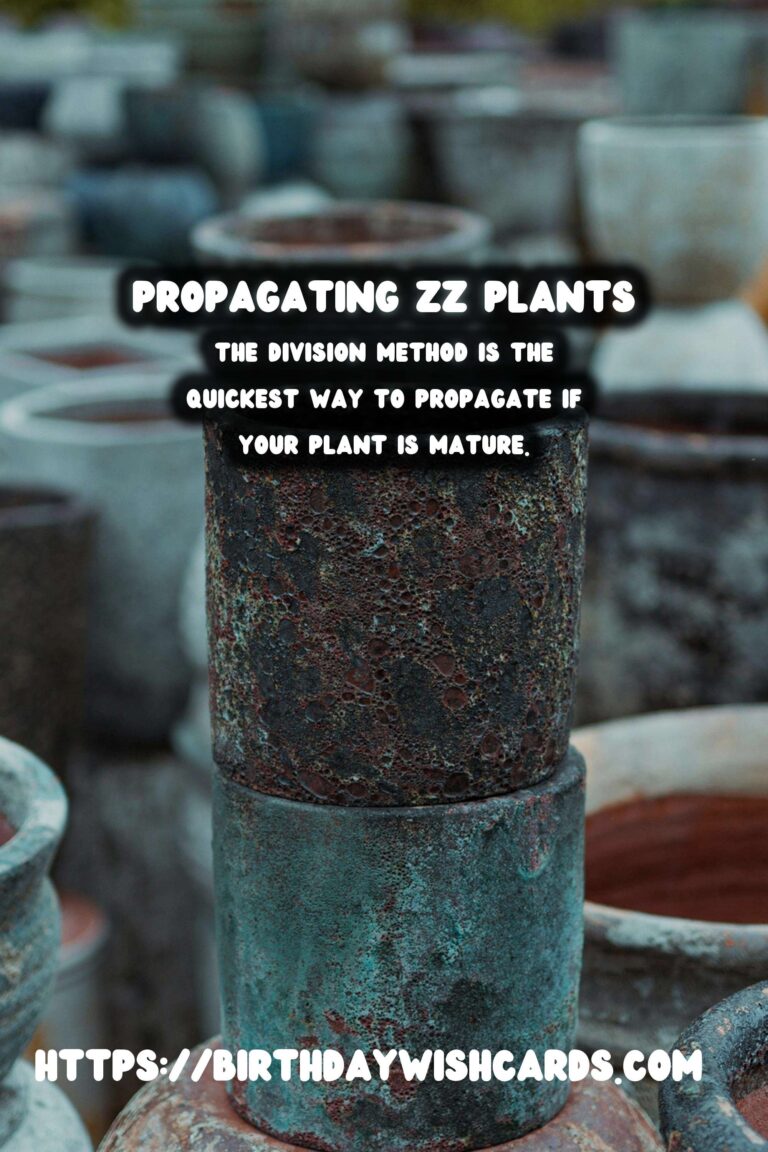
The ZZ plant, also known as Zamioculcas zamiifolia, is a popular houseplant appreciated for its resilience and attractive glossy leaves. Propagating ZZ plants is a straightforward process that allows you to expand your collection or share these beautiful plants with friends and family. This guide will walk you through the steps necessary to successfully propagate your ZZ plant.
Understanding the ZZ Plant
Before you begin the propagation process, it’s important to understand the basics of the ZZ plant. Native to East Africa, the ZZ plant thrives in a variety of conditions, making it an ideal choice for both beginner and seasoned plant enthusiasts. It has rhizomes, which are thickened underground stems that store water, allowing the plant to survive periods of drought.
Methods of Propagation
There are several methods to propagate ZZ plants, including division, leaf cuttings, and stem cuttings. Each method has its advantages and specific steps to follow.
Propagation by Division
Division is the quickest method of propagation and works well if your plant is mature and has multiple stems. To divide your ZZ plant, carefully remove the plant from its pot and gently separate the rhizomes. Each section should have at least one stem and a healthy rhizome. Replant the sections in individual pots with well-draining soil and water thoroughly.
Propagation by Leaf Cuttings
Propagating ZZ plants from leaf cuttings takes longer but is a fascinating process. Cut a healthy leaf from the plant, ensuring you include a small part of the stem. Allow the cut end to dry for a few hours to prevent rot. Plant the cutting in a pot filled with a mix of perlite and potting soil. Water lightly and place in a warm, bright location. Be patient, as it may take several months for new growth to appear.
Propagation by Stem Cuttings
Stem cuttings are another effective way to propagate ZZ plants. Cut a stem with a few leaves attached, and like the leaf cuttings, let the cut end dry. Plant the stem in a pot with well-draining soil and water sparingly. Keep the cutting in indirect light and watch as it gradually develops roots and new growth.
Caring for Propagated ZZ Plants
Once your new ZZ plants have established roots, it’s crucial to provide them with proper care to ensure their continued growth. Place them in a location with indirect sunlight and water only when the soil is dry to the touch. ZZ plants are drought-tolerant, so it’s better to underwater than overwater.
Fertilize your plants during the growing season with a balanced, water-soluble fertilizer to encourage healthy growth. ZZ plants prefer temperatures between 65°F and 75°F, making them well-suited for indoor environments.
Common Problems and Solutions
While ZZ plants are generally hardy, they can encounter issues such as yellowing leaves or root rot. Yellow leaves often indicate overwatering, so adjust your watering schedule accordingly. If root rot is suspected, remove the plant from its pot, trim away affected roots, and replant in fresh soil.
Conclusion
Propagating ZZ plants is an enjoyable and rewarding process that allows you to grow your plant collection with minimal effort. By understanding the propagation methods and providing the right care, you can successfully cultivate healthy ZZ plants that thrive in your home.
ZZ plants are resilient and have attractive glossy leaves. Propagating ZZ plants can expand your collection or allow you to share them with others. There are several methods to propagate ZZ plants, including division, leaf cuttings, and stem cuttings. The division method is the quickest way to propagate if your plant is mature. Leaf cuttings take longer but offer a fascinating propagation process. Caring for propagated ZZ plants involves proper watering and placement in indirect sunlight. ZZ plants are drought-tolerant, making them ideal for indoor environments. 









#ZZPlant #PlantPropagation #Houseplants #Gardening




